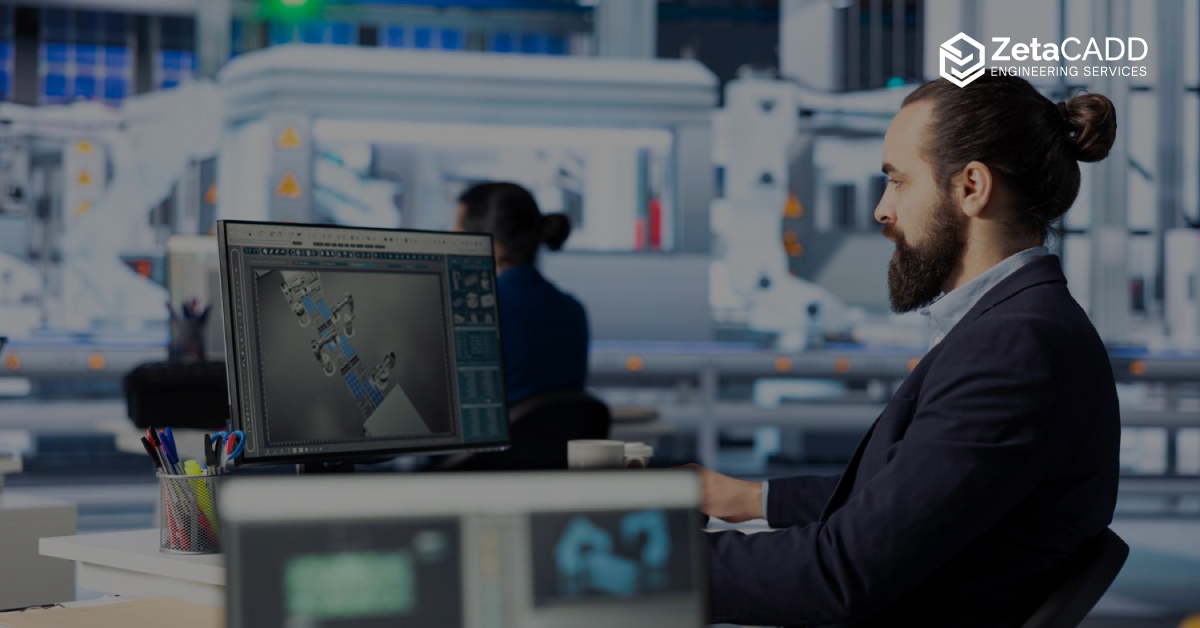How CNC Programming Can Reduce Cycle Time Without Losing Tolerance
Businesses are prioritizing manufacturability and accuracy, and increasingly relying on engineering design outsourcing and advanced CNC programming services to improve manufacturability, reduce costs, and reduce cycle time without losing tolerances. Shorter cycle time means faster production and quicker time-to-market. However, in a bid to speed up the cycle, maintaining tolerances should not be neglected. CNC & CAM experts strategically incorporate technological and process advancements into operations to reduce cycle time without losing tolerance and hence reap desired business benefits.
Speed Vs Precision: Busting the myth that fast cycle times mean sloppy precision and quality.
Cycle time in CNC machining refers to the total time taken by a machine to complete one part. It includes loading, machining, tool changes and unloading. Optimizing this process for faster cycle time means faster production and quicker time to market, lower costs and hence better business returns. However, the belief that faster cycle times inherently lead to lower tolerances and hence compromised product quality is wrong. Striking the balance between speed and precision is essential and possible. So what strategies do top CNC and CAM programming service providers employ to strike this balance? Let’s understand:
Key strategies in CNC programming to reduce cycle time while maintaining precision:
Optimized tool paths: An optimised tool path improves the cutting efficiency, leading to better surface finishes, reduced material waste, higher precision – hence superior quality.
Intelligent use of canned cycles: Intelligent use of canned cycles offers precise control over feed rates and cutting depths. More importantly, it optimizes tool engagement to reduce wear and increase tool life.
Adaptive machining techniques: Adaptive machining allows higher cutting speeds, deeper cuts and optimal precision and cuts down the cycle time to half. High precision inputs using adaptive machining speeds up the cycle while keeping tight tolerances.
Dynamic work offsets and probing: DWO offers the flexibility of real-time shifting of the work coordinate system during multiaxis machining. This means that alignment is precise, and it does not require reprogramming when the part shifts. Probing is done to verify the part dimensions and positions on the machine. It improves accuracy, reduces rework and makes manufacturing efficient.
Macro programming and reusable code: Reusable blocks of code are used to automate repetitive tasks. This leads to faster programming cycles, improved machine utilisation and simplified program maintenance.
Technology enablers
Engineering design outsourcing services have access to the latest tools and technology that allow them to strike the right balance between speed and precision to drive substantial business benefits for manufacturers. Partner with service providers who have access to the best talent pool and know the what, why, where and how of technology adoption. Let us see some advanced technologies that service providers use to drive modern manufacturing.
- CAD-CAM integration:
Modern CAD/CAM platforms allow the transfer of design intent into manufacturing processes seamlessly. CAM and CAD works outsourcing to expert service providers ensures that there are fewer programming errors, faster turnaround, and higher precision since
- CNC Programming with Advanced Toolpaths
High-speed machining strategies such as adaptive clearing, trochoidal milling, and rest machining allow manufacturers to remove material efficiently without stressing the tool or compromising surface finish.
- Automation and Robotics:
Integrating robotic loading/unloading, pallet changers, and automatic tool changers (ATCs) into CNC setups minimizes the risks of human errors and allows ease of handling complex, high-volume production. Combine this with lights-out machining, and it keeps the machines running 24/7 with minimal supervision. Hence, benefits like cost reduction and higher throughput.
- IoT and Industry 4.0 in Manufacturing
Smart CNC machines connected via IoT sensors collect real-time data on spindle loads, vibration, temperature, and tool wear. This information feeds into predictive maintenance and closed-loop control systems. This results in higher machine availability, reduced downtime, and sustained accuracy during high-speed production.
- Advanced Simulation & Prototyping
Virtual prototyping with FEA, CFD, and machining simulation reduces the need for physical prototypes. Testing with Digital twin technology allows faster design iterations, fewer errors, lowers material wastage and reduces the cost and time required for multiple physical prototypes and testing.
Reducing time without sacrificing tolerance: Mistakes you must avoid
- Incorrect tool selection: Inefficient cutting and poor finishes
- Syntax errors and mistakes in coding: Machine faults and delays
- Over/under estimating machine capabilities: Machine overload and crashes
- Overlooking material properties: Tool damage and suboptimal cuts
- Not optimizing toolpaths: Unnecessary movements and longer cycles
- Neglecting preventive maintenance: Inconsistent performance and increased downtime
- Poor documentation and version control: Programming mistakes and repeated errors
- Ignoring machine maintenance: Frequent errors and unplanned downtimes
- Not using advanced simulation: Increased costs and prototyping efforts
- Overprioritizing speed and neglecting tolerances : Quality deterioration, and sometimes breakdowns, costly adjustments and more. Hence ,it is always prudent to strike the right balance of speed and precision.
Strategy + Technology + Expertise = Formula for Smarter Design-to-Manufacturing
At ZetaCADD we combine strategy, technology and years of experience and expertise in CNC programming services and engineering design outsourcing to help our manufacturing clients speed up cycles without losing tight tolerances. The balance of speed and precision not only reduces the time to market but also helps manufacturers reduce costs, improve quality and achieve sustainable manufacturing growth.


